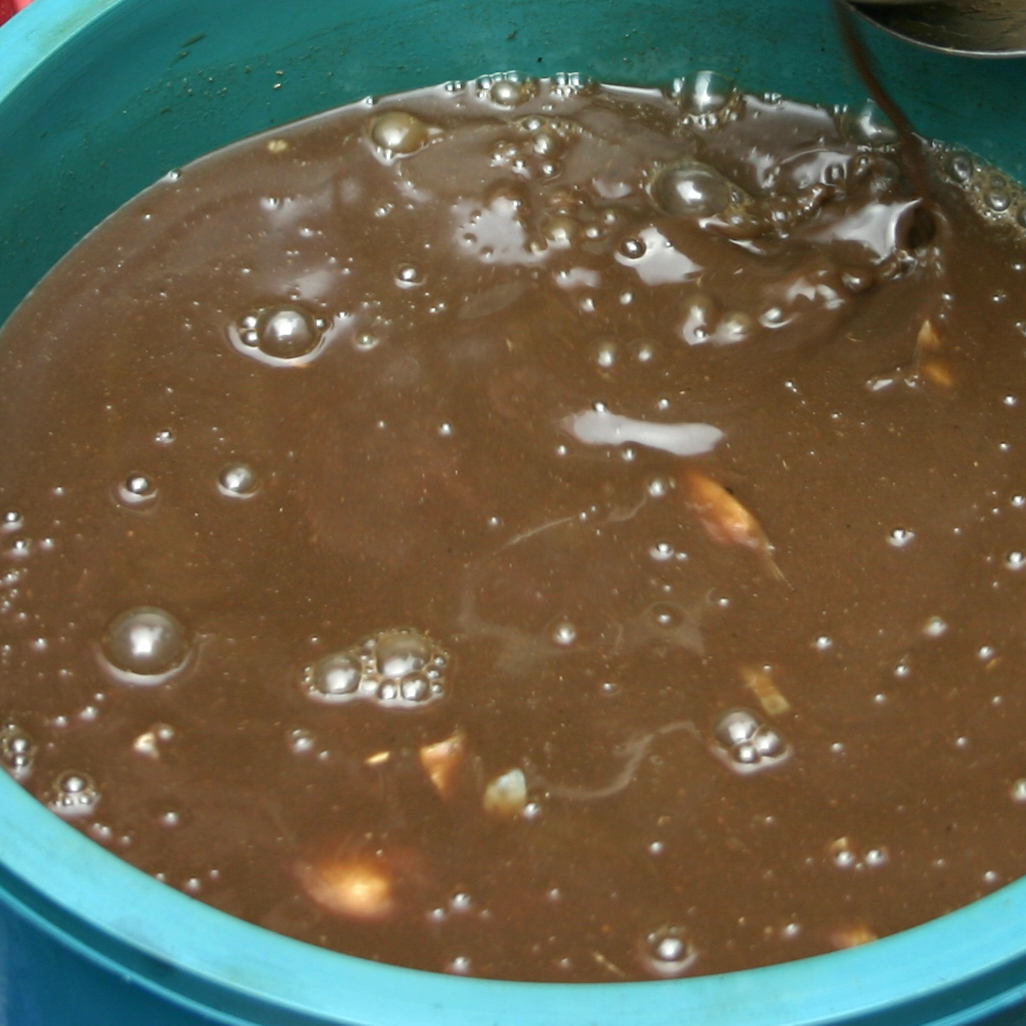When wandering through one of the suburban weekend markets on the outskirts of Chiang Mai one day, I came across more than one vendor selling fermented fish (pla rah). I had heard about this concoction for many years, but had never seen it. This ‘ancestor’ of the commonly used fish sauce is not for the feint of heart. David Thompson calls it “an evil thing, leering out from its murky distant past.”

It is indeed a very old component of South-East Asian cuisine, probably dating from pre-historic times. Fermented fish is made by salting fresh water fish, then drying it in the sun for several days. After that, it is fermented with rice, which may be boiled or roasted. As you might imagine, the smell is “distinctive” to say the least. But as the British Minister-Resident Ernest Satow noted in the journal of his trip to Northern Siam more than 100 years ago:
“… Every nation eats something offensive to the nostrils or palate of its neighbors.
“The Japanese have a pickled radish-turnip; the Chinese have salted eggs, water chestnuts [?], and a variety of other things that no European would look at; Germans have sauerkraut; Frenchmen eat frogs and snails; all Europeans have cheese, especially Limburg, some of which I would not sit in the same room with for two minutes for any consideration; the Malays have balachang, the Burmese gnapi, and the Siamese kapi – to say nothing of the offensive durian fruit so common and so highly prized in Indo-China and the Malay Archipelago. So we must not be too hard on the poor Laos for liking plara, as their particular form of high food is called.”
Satow made these comments after recounting how his rest at camp one night was “much disturbed by an abominable odour, which proved to emanate from a preparation of rotten fish that was maturing on a sand bank.” He also noted that the concoction “serves as a relish for their otherwise insipid food.”
Fermented fish is a traditional ingredient in many recipes, especially those of North-Eastern Thai origin, such as dipping sauces, soup bug-mee - a sort of salad made with jackfruit and marinated fish - and variations on the popular green papaya salad called som tam. Around northern Thailand, fermented fish is used in another one of the north’s famous chilli dips, tellingly named “red eye chili dip”. Fermented fish also appears in a sort of salad made with brinjal eggplants.
Although Asian cuisines seem to be the only ones that still makes extensive use of fish-based seasoning, it was one a widely used ingredient throughout the old world. The Greeks and Romans called it garum and used it in almost every recipe dating back to the sixth to seventh century B.C. It might have fallen out of favour in the west, in part, due to the preparation’s potential to kill those who eat it if the sauce has not been handled properly during fermentation.
The reason fish sauce and related products continue to be used as such a fundamental part of so many cuisines is the presence in the sauce of high levels of an amino acid called glutamate. Glutamate is a very common amino acid, perhaps one of the most common in nature. It especially occurs in high levels in fermented products such as fish sauce, soy sauce, oyster sauce and even Vegemite. In 1908, a Japanese scientist named Kikunae Ikada discovered that glutamate made things taste better. The more glutamate a food had, the better it tasted. Thus was monosodium glutamate, more commonly known as MSG, born.